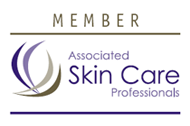Benefits Of Skin Care Treatments
Why should see an esthetician?
Estheticians are trained in skin wellness, helping their clients balance oil and moisture content and achieve a healthy, vital and youthful complexion. As well as various facial treatments (described in more detail below), also performing hair removal techniques such as waxing, body treatments and moisturizing to rejuvenate the skin.
A variety of treatments and products are used to protect skin from environmental hazards and combat fine lines, wrinkles, and a dull, uneven skin tone. Estheticians are also skilled in managing conditions such as acne, rosacea, eczema, and dry skin, to name just a few. And finally, skin care treatments are wonderfully relaxing and rejuvenating. If smooth, healthy skin is your goal, visiting a skin care professional can benefit you.
If you’re being treated by a dermatologist, your esthetician can provide complementary and support therapies. In addition, estheticians are trained to recognize early signs of medical conditions affecting the skin.
Techniques and products
Techniques used by estheticians include manual facials and machines may also be used to help deliver high-tech services.
Some common therapies:
- Chemical peel: An exfoliation process, very effective in treating a large range of skin concerns such as aging, sun damage, acne, mild scarring, pigmentation, improving overall skin brightness and even skin tone. Often performed multiple times at intervals of 4-6 weeks. Light peels require no down time from work or normal activities. Moderate peels may require a day or two of down time.
- Exfoliation: The removal of dead skin cells manually, mechanically, with a chemical peel or with an enzymatic product that digests dead skin cells.
- Extraction: This is the process of deep cleansing the pores, either manually or using a metal extraction tools.
- Facial: A facial is a good way for your esthetician to get a good understanding of your skin prior to suggesting other treatments. Facials can be scheduled once at week, although your esthetician may recommend a different schedule based on your individual needs.
- Waxing: Waxing removes unwanted hair from the root and can take up to 2 to 12 weeks for new hair to grow back. Usually the new hair grows back softer and thinner than before.
What about home care?
Much of the success of maintaining a visible improvement after treatment depends on consistent and correct home care. Your esthetician is trained to select the products that will most benefit your skin, and to advise you on how to maintain your professional results between visits. Following the right skin care at home is essential if you are to get the most out of your visits to a professional.
Your esthetician
Your skin care treatments should be provided by a properly trained professional. Don’t hesitate to ask your skin care professional about her training, and experience—especially as it relates to the treatment you are considering. Your esthetician is a professional member of Associated Skin Care Professionals, validated as meeting their state’s licensing credentials and/or core training requirements, and agree to follow a code of ethics which ensures you’ll be treated responsibly and with the utmost respect. Associated Skin Care Professionals also provides its members with comprehensive resources that allow them to keep up with changing trends, making certain you’ll receive the most up-to-date therapies available.

